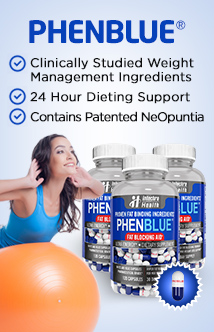Diverticulitis Diet
- Reviews
- Hits: 1562
What is the Treatment for Diverticular Disease (diverticulitis)?
Diverticular disease, diverticulitis, a type of digestive disease, is probably caused by our highly refined Western Diet, with inadequate amounts of fiber, especially soluble fiber. Typical treatment for diverticular disease includes a high-fiber diet and, occasionally, mild pain medications which help relieve symptoms in most cases. Sometimes an attack of diverticulitis is serious enough to require a hospital stay and possibly surgery.
What are Diverticulosis and Diverticulitis?
Diverticulosis occurs when small weak spots in the colon bulge outwards forming small pockets called diverticula. As people age, diverticulosis become increasingly common, occuring in almost 50% of people over the age of 60. Diverticulitis is a condition where the small pouches become infected or inflamed and occurs in 10 to 25 percent of people with diverticulosis. Diverticulosis and diverticulitis are also called diverticular disease.
What are the symptoms of Diverticular Disease?
Most people with diverticulosis do not have any discomfort or symptoms. However, symptoms may include mild cramps, bloating, and constipation. The most common symptom of diverticulitis is abdominal pain. The most common sign is tenderness around the left side of the lower abdomen. If infection is the cause, fever, nausea, vomiting, chills, cramping, and constipation may occur as well.
Diverticulosis Diet and Fiber
Increasing the amount of fiber in the diet may reduce symptoms of diverticulosis and prevent complications such as diverticulitis. Fiber keeps stool soft and lowers pressure inside the colon so that bowel contents can move through easily. The American Dietetic Association recommends 20 to 35 grams of fiber each day. Of this, about 6-8 grams should be soluble fiber.
The table below shows the amount of fiber in some foods that you can easily add to your diet.
Higher Fiber Diet Foods
Fruits
apple 1 medium = 4g fiber
peach 1 medium = 2g
pear 1 medium = 4g
tangerine 1 medium = 2g
Vegetables
acorn squash, fresh, cooked 3/4 cup = 7g fiber
asparagus, fresh, cooked 1/2 cup = 1.5g
broccoli, fresh, cooked 1/2 cup = 2g
brussels sprouts, fresh, cooked 1/2 cup = 2g
cabbage, fresh, cooked 1/2 cup = 2g
carrot, fresh, cooked 1 = 1.5g
cauliflower, fresh, cooked 1/2 cup = 2g
romaine lettuce 1 cup = 1g
spinach, fresh, cooked 1/2 cup = 2g
tomato, raw 1 = 1 gram
zucchini, fresh, cooked 1 cup = 2.5g
Starchy Vegetables
black-eyed peas, fresh, cooked 1/2 cup = 4g
lima beans, fresh, cooked 1/2 cup = 4.5g
kidney beans, fresh, cooked 1/2 cup = 6g
potato, fresh, cooked 1 = 3g
Grains
bread, whole-wheat 1 slice = 2g
brown rice, cooked 1 cup = 3.5g
cereal, bran flake 3/4 cup = 5g
oatmeal, plain, cooked 3/4 cup = 3g
white rice, cooked 1 cup = 1g
Fiber and Fluid
If you suffer from diverticulitis and increase your fiber intake, make sure you increase your fluid intake at the same time. (Drink at least 3 pints per day). Insoluble fiber needs fluid in order to form stools that are easy to pass.
Fiber Supplements/Products
The doctor may also recommend taking a fiber product such as Citrucel or Metamucil once a day. These products are mixed with water and provide about 2 to 3.5 grams of fiber per tablespoon, mixed with 8 ounces of water.
Until recently, many doctors suggested avoiding foods with small seeds such as tomatoes or strawberries because they believed that particles could lodge in the diverticula and cause inflammation. However, this is now a controversial point and no evidence supports this recommendation. Individuals differ in the amounts and types of foods they can eat.
If cramps, bloating, and constipation are problems, the doctor may prescribe a short course of pain medication. However, many medications affect emptying of the colon, an undesirable side effect for people with diverticulosis.














